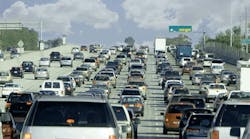The National Safety Council estimates 439 people could be killed and an additional 50,500 will be seriously injured in motor vehicle crashes during the three-day Memorial Day holiday period. If the estimate holds, this will be the deadliest Memorial Day holiday since 2009, when 462 Americans were killed on the nation’s roadways, according to federal data.
The estimate comes as traffic fatalities continue to trend upwards. In February, the National Safety Council released its preliminary estimates showing motor vehicle fatalities had increased 8 percent in 2015 compared to 2014 – the largest year-over-year percentage increase in 50 years. Memorial Day also marks the unofficial start of summer, which always is a dangerous time on the roads. More than 9,570 people died on U.S. roads in 2014 between May 24 and August 31.
“As Americans gear up for the most carefree months of the year, we cannot take our safety for granted,” said Deborah A.P. Hersman, president and CEO of the National Safety Council. “Driving is one of the riskiest things we do every day. Engaging our defensive driving skills and staying alert can mean the difference between attending cookouts and family parties or spending the evening at the emergency room or worse.”
The council believes the spike in fatal car crashes is due in part to an improving economy with lower gas prices and lower unemployment rates. Certain crash factors, such as speeding and alcohol, are more common during the summer, too.
To help stay safe on the roads this summer, the council recommends:
- Making sure every passenger buckles up every trip. The council estimates 104 people could be saved this Memorial Day holiday if they buckle up.
- Designating an alcohol- and drug-free driver or arranging alternate transportation.
- Getting plenty of sleep and taking regular breaks to avoid fatigue on long trips.
- Never using a cell phone behind the wheel, even hands-free.
- Staying engaged with your teens’ driving habits. An NSC survey found many parents are more inclined to loosen household driving rules during the summer.
- Learning about your vehicle’s safety systems and how to use them. MyCarDoesWhat? can help drivers understand the ins and outs of features such as adaptive cruise control, automatic emergency braking, blind spot warning systems and backup cameras.

